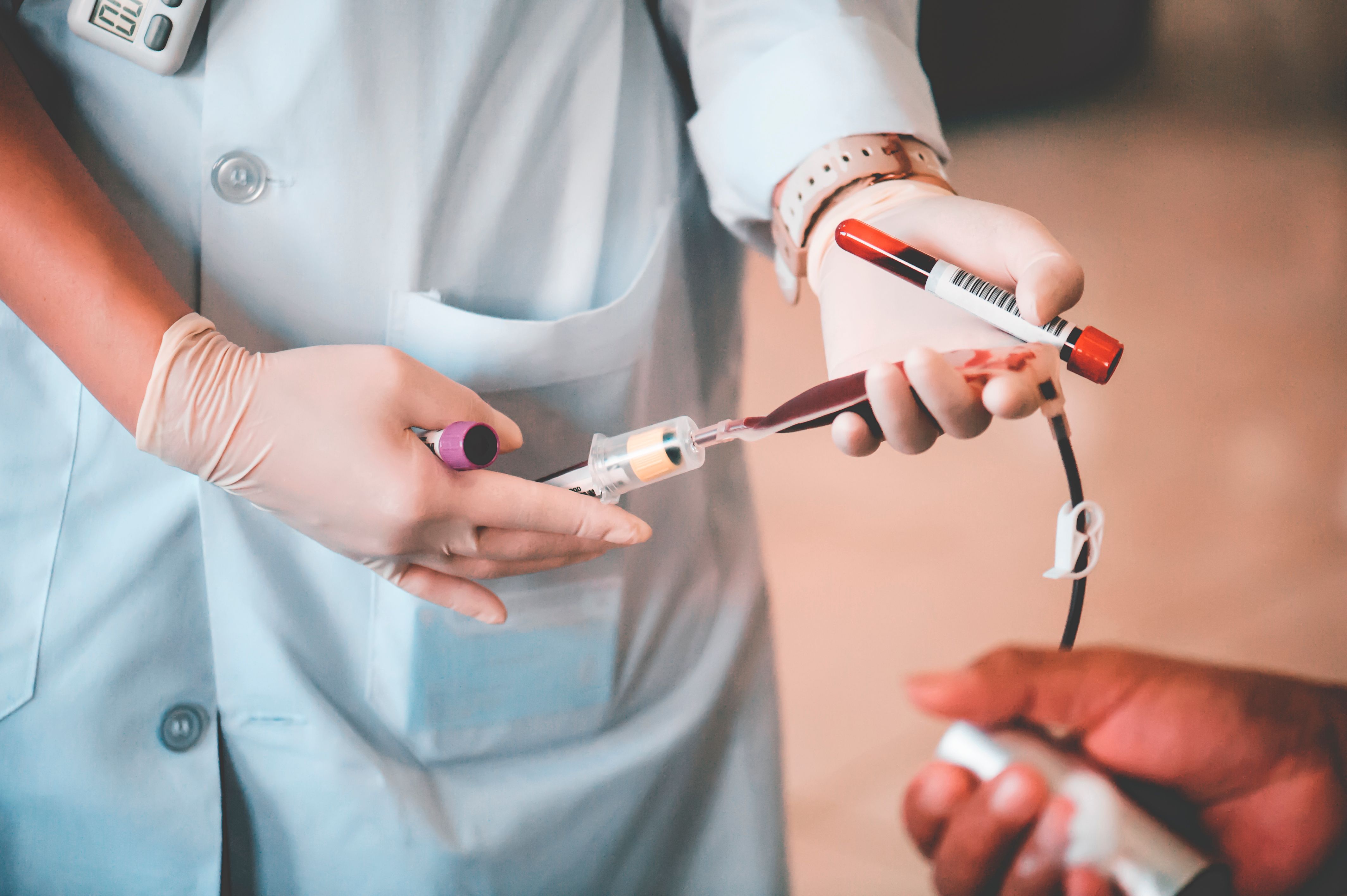New Near-Infrared Machine Learning Technique Identifies Dangerous Blood for Transfusion Safety
A team of researchers from Gannan Normal University and the Central Blood Station of Ganzhou City in Jiangxi Province, China, conducted a study using the GaiaSorter "Gaia" hyperspectral sorter to analyze plasma samples. This advanced technology extracts 254 spectral bands of near-infrared (NIR) plasma hyperspectral images, from 900 nm to 1700 nm, allowing for precise analysis of the blood's spectral characteristics (1).
Blood donation and blood donor - © kuarmungadd - stock.adobe.com

The study, titled "Detection of Chylous Plasma Based on Machine Learning and Hyperspectral Techniques," was led by Yafei Liu and his colleagues and published in the journal Applied Spectroscopy. The researchers used four different machine learning algorithms to classify the NIR hyperspectral plasma images: decision tree, Gaussian Naive Bayes (GaussianNB), perceptron, and stochastic gradient descent (1).
Transfusing chylous blood contains high levels of fat, often due to an obesity in blood donors, and poses significant health risks to transfusion patients. One of the most serious dangers to blood recipients is fat embolism, where fat droplets form clots that can block blood flow in vital areas such as the lungs, leading to respiratory distress or even death. The high fat content can also trigger severe allergic reactions, causing swelling, difficulty breathing, and a sudden drop in blood pressure, potentially resulting in life-threatening anaphylaxis. Additionally, the increased viscosity from the fat can elevate blood pressure, strain the heart, and increase the risk of heart attack or stroke (2).
Moreover, transfusing chylous blood can lead to febrile reactions, with symptoms like fever and chills, and can trigger inflammation, damaging various organs. This inflammation can reduce organ function and lead to conditions like hypoxia, where tissues receive insufficient oxygen. Given these risks, ensuring that chylous blood is not used in transfusions is critical for patient safety. The use of advanced techniques, such as hyperspectral imaging and machine learning, can help accurately identify chylous blood, reducing the risks of adverse reactions during blood transfusions. Spectroscopy has recently been recommended as a means for rapid and non-destructive analysis of blood samples in multiple applications (3)
Read More: Childhood Obesity Serum Samples Analyzed Using Fourier Transform Infrared Spectroscopy
Traditionally, identifying chylous blood has been a time-consuming process, but new research shows that hyperspectral imaging and machine learning could revolutionize the detection process.
Initially, the researchers compared the classification accuracies of these algorithms with the original data. They found that the decision tree and GaussianNB models performed best, achieving average accuracies of over 90%. The team then applied feature dimension reduction to the data, focusing on the most relevant spectral bands, which improved the accuracy of the decision tree model to 93.33% (1).
In the study's final analysis, the researchers concluded that the decision tree and GaussianNB models consistently provided the most accurate results. The feature dimension reduction method allowed them to identify seven key bands that were most effective for detecting chylous blood. These near-infrared bands were at wavelengths 962.93, 1122.37, 1338.87, 1380.21, 1558.16, 1656.56, and 1697.8 nm (1).
Overall, the study suggests that chylous plasma can be identified quickly and accurately using these methods, potentially reducing wasted blood resources and increasing the efficiency of blood donation centers. However, the researchers noted that their study used a limited number of samples, which could affect the generalizability of their results. They recommend further studies with larger datasets to optimize the model parameters and strengthen the reliability of the findings (1).
This breakthrough in hyperspectral imaging when combined with machine learning technology offers a promising solution to a critical medical challenge. With continued research and refinement, this technique could become a standard tool in blood donation centers, ensuring that chylous blood is identified and removed from the transfusion pool, thereby safeguarding patient health.
References
- Liu, Y.; Lai, J.; Hu, L. et al. Detection of Chylous Plasma Based on Machine Learning and Hyperspectral Techniques. Appl. Spectrosc. 2024, 78 (4), 365–375. doi:10.1177/00037028231214802
- Qian, Q.; Xu, W.; Li, W.; Wang, B.; Wang, L.; Zhou, Q. Accurate Detection of Chylous Blood Levels by Deep Learning. IEEE Access 2022, 10, 73988–73996. DOI: 10.1109/ACCESS.2022.3189369
- Acevedo, A. Childhood Obesity Serum Samples Analyzed Using Fourier Transform Infrared Spectroscopy. https://www.spectroscopyonline.com/view/childhood-obesity-serum-samples-analyzed-using-fourier-transform-infrared-spectrscopy (accessed 2024-05-03).
NIR Spectroscopy Explored as Sustainable Approach to Detecting Bovine Mastitis
April 23rd 2025A new study published in Applied Food Research demonstrates that near-infrared spectroscopy (NIRS) can effectively detect subclinical bovine mastitis in milk, offering a fast, non-invasive method to guide targeted antibiotic treatment and support sustainable dairy practices.
New AI Strategy for Mycotoxin Detection in Cereal Grains
April 21st 2025Researchers from Jiangsu University and Zhejiang University of Water Resources and Electric Power have developed a transfer learning approach that significantly enhances the accuracy and adaptability of NIR spectroscopy models for detecting mycotoxins in cereals.
Karl Norris: A Pioneer in Optical Measurements and Near-Infrared Spectroscopy, Part II
April 21st 2025In this two-part "Icons of Spectroscopy" column, executive editor Jerome Workman Jr. details how Karl H. Norris has impacted the analysis of food, agricultural products, and pharmaceuticals over six decades. His pioneering work in optical analysis methods including his development and refinement of near-infrared spectroscopy, has transformed analysis technology. In this Part II article of a two-part series, we summarize Norris’ foundational publications in NIR, his patents, achievements, and legacy.